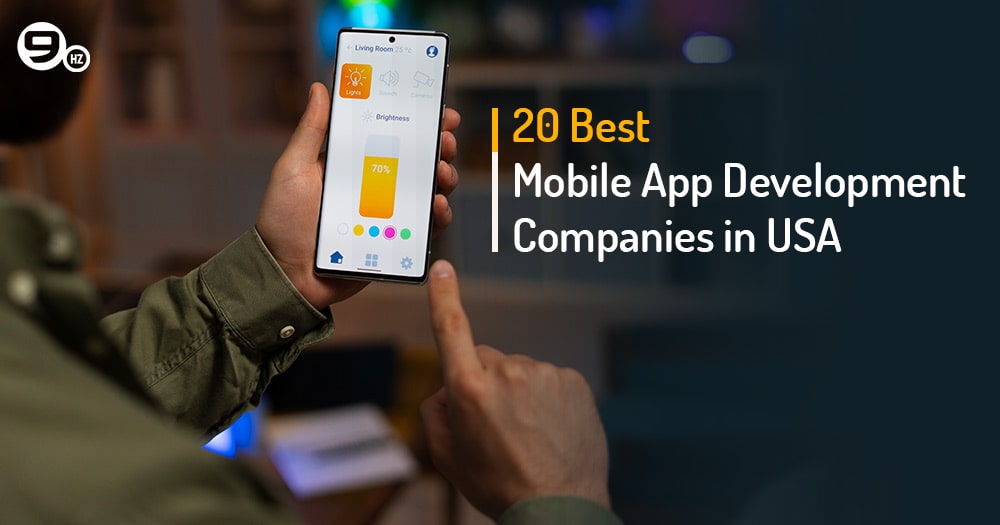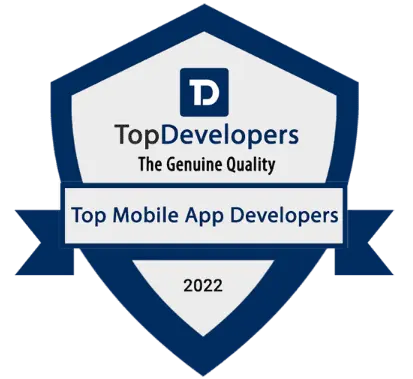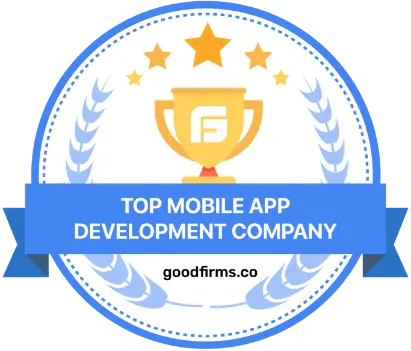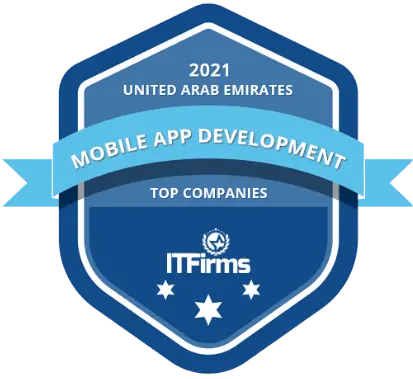In the fast-paced digital economy of today, organizations are continually pressured to innovate more quickly, operate with less, and deliver tremendous value to customers. To navigate this balancing act, organizations have increasingly leveraged external partners to perform a range of functions, from IT operations and customer support to product development and maintenance. Yet, determining the best outsourcing model is complicated by options ranging from Build-Operate-Transfer (BOT) to Business Process Outsourcing (BPO) to Managed Services, which all offer distinct benefits and trade-offs.
In a new 2025 Deloitte Global Outsourcing Survey, over 72% of companies indicated their intention to increase their usage of outsourcing models for operational efficiencies and access to specialized capabilities. Many of these companies, however, have difficulty determining which outsourcing framework best fits their strategic priorities. The BPO model focuses primarily on outsourcing defined processes to providers, while Managed Services are a long-term, ongoing outsourcing model focused on IT or operational management arranged through service-level agreements. The BOT model, a hybrid model, combines flexibility and ownership. It allows companies to build an offshore centre, operate the centre with a partner initially, and then transition the centre to a fully functioning unit under the company’s control.
All three models serve a different purpose within the organization. The determination of which outsourcing model to select depends on what is more important to your organization, cost reduction, scalability, or control over intellectual property.
This blog will break down the fundamental ideas, salient distinctions, and useful benefits of managed services, BOT, and BPO. By the end of the blog, you will know which model best suits the long-term sustainability and growth goals of your business.
Understanding the Three Business Models
Technology is redefining various industries, and organizations are always searching for new ways to optimize their operations, reduce costs, and gain access to expertise. Among the most frequently used models are Build-Operate-Transfer (BOT), Business Process Outsourcing (BPO), and Managed Services, which all offer a slightly different means of delegation and operational control. Understanding how each model works is crucial for selecting a model that best aligns with your company’s business goals and maturity.
What is a BOT Model (Build-Operate-Transfer)?
In the Build-Operate-Transfer (BOT) model, a firm enters into a strategic partnership with a third-party vendor to construct and run an offshore or nearshore facility for a predetermined amount of time, after which ownership is transferred to the company. There are three main stages to it:
- Build phase: The partner establishes operational procedures that are in line with the client’s objectives, builds the infrastructure, and employs qualified personnel.
- Operate phase: The vendor oversees the operation for the client, managing personnel, streamlining procedures, and producing results in a transparent manner all along the way.
- Transfer phase: At the point where the operation is stable and mature, the operation, including the team, infrastructure, and knowledge, is transferred to the client in an organized manner.
This model is an excellent option for organizations that want the ability to create offshore development centres (ODCs) or R&D centres while avoiding the early establishment risk. It offers a critical balance between control and scalability, allowing an organization to evaluate the potential of a new market without complete resources. If you are looking for these services, The NineHertz is the leading Build Operate Transfer Services Provider.
What is BPO (Business Process Outsourcing)?
Business Process Outsourcing (BPO) is a popular model where, in essence, a business will outsource some specific non-core operations, or back-office operations, to another service provider. A business can outsource (for example) its customer service, payroll function, data entry process, HR function, or even finance. The intent of BPO is to free the internal employees to add value with strategic and revenue-generating business activities.
BPO has two models:
- Front office outsourcing: Tasks that interface directly with customers. This includes business functions like call centres, helpdesk support, or sales support.
- Back office outsourcing: Internal processes like accounting and finance, IT support, and procurement, or back-office functions like HR and payroll.
BPO offers several advantages, including:
- Cost reduction: Lower labour and operational costs.
- Scalability: Available resources to help deal with fluctuations.
- Efficiency: Access to a global workforce and operational expertise.
- Focus: Allows internal teams to focus on innovation and strategy.
One downside to BPO is the lack of direct control, as well as potential data safety and security issues. This means vendor selection and governance become very important.
What are Managed Services?
Managed Services are characterized by an ongoing service provider relationship where the provider assumes an outcome-based commitment to proactively manage and maintain specific IT systems or business operations. Traditional outsourcing is about hiring providers to get work done, while Managed Services focus on defining metrics and then continuously analyzing the system over time, and optimizing for performance and performance metrics, within the agreement terms against the previously defined SLAs:
Examples of managed services include:
- IT Infrastructure Management (network, servers, and cloud systems)
- Cybersecurity and Data Protection
- Application Maintenance and Support
- DevOps and Cloud Operations
Here, the service provider accepts “end-to-end” accountability for delivering the defined function, including metrics for performance, reliability, and scalability, while the client keeps overall responsibility for strategy.
Some key benefits are:
- Predictability in cost with a subscription pricing structure
- Expertise and tools not available in-house
- Offer 24/7 oversight and resolution of issues
- Less downtime and increased productivity
While BPO is driven by processes, Managed Services focus on manageability, accountability, and measurement. Managed Services provides companies with a way to scale their IT and augment resources without needing to build in-house staff.
Though they are all outsourcing arrangements, BOT, BPO, and Managed Services will require a different level of intent, structure, and ownership consideration. BOT is dedicated to developing long-term capacity; BPO is focused on performance efficiency; and Managed Services is focused on operational performance and reliability. Understanding the fundamental differences is the first step in assessing which arrangement aligns with your business operation intent and appetite for risk.
BOT vs. BPO vs. Managed Services: Key Differences
While all three models, BOT, BPO, and Managed Services, allow companies to use outside expertise, the underlying framework, ownership, and intent of each model are quite different. Recognition of these differences informs organizations choices of relationships that best align with operational maturity, risk appetite, and long-term vision.
Comparison Table: BOT vs. BPO vs. Managed Services
| Parameter | BOT (Build-Operate-Transfer) | BPO (Business Process Outsourcing) | Managed Services |
|---|---|---|---|
| Ownership & Control | Gradual transfer of ownership from vendor to client after setup and operation | No ownership transfer; vendor fully manages outsourced tasks | Vendor manages operations under a defined SLA; client retains strategic oversight |
| Engagement Duration | Long-term (typically 2-5 years) | Short to medium term (process-based contracts) | Long-term (service-based contracts) |
| Cost Model | High initial investment, but long-term cost efficiency | Low initial cost, pay-per-service or FTE-based | Subscription or retainer-based, predictable costs |
| Risk Level | Shared during build/operate; transferred later to the client | Mostly borne by the vendor | Shared, but operational risks are managed by the vendor |
| Scalability | High, can expand operations easily post-transfer | Moderate, depends on vendor flexibility | High, scales dynamically based on performance needs |
| Control & Oversight | High after transfer | Limited | Moderate to high, with performance visibility |
| Best Suited For | Companies planning long-term offshore centres or R&D hubs | Businesses outsourcing repetitive or non-core tasks | Organizations needing ongoing IT or process management |
| Example Industries | Technology, product development, R&D | Banking, telecom, retail, e-commerce | Healthcare, IT, cybersecurity, SaaS |
Each of these three models has specific challenges relating to flexibility, control, and accountability. As such, organizations looking for short-term efficiency usually go with the BPO model, while organizations seeking to develop sustained operational excellence typically go with Managed Services. However, organizations that are trying to build a genuine long-term global capability frequently find that BOT is the best strategic investment.
Advantages and Disadvantages: BOT vs. BPO vs. Managed Services
Not every model suits every organization. Factors for consideration include the organization’s overall maturity, overall goals and of course, how much control or ongoing flexibility the organization intends to keep. Each one of these models is laid out in detail below so you can make the best decision for your organization.
BOT Model – Pros and Cons
The Build-Operate-Transfer (BOT) model is unique because it combines the advantages of outsourcing and in-house operations. It works quite well for companies that are interested in growing into an offshore or nearshore operation. Here is ultimate guide on BOT in IT & Software development.
Pros:
- Ownership and Control: When the transfer phase is complete, the client assumes ownership of the team, infrastructure, and operation, giving them the most control.
- Lower Risks: From the start, the vendor invests and assumes the risks associated with getting the operation up and running, thus minimizing the risks and burden on the client during the early stages.
- Scalable and Customizable: The BOT model allows teams and operations to be scaled up or down relatively comfortably as the business needs change.
- Retention of Knowledge: Important intellectual property, established processes, and expertise are retained within the organization after a transfer is complete.
- Ideal for Testing Markets: The BOT approach allows companies to test an area or geography before going all in for future expansion.
Cons:
- Long Period of Establishing: Getting an operation established and stabilized can take months or years prior to getting to the transfer phase.
- More Capital Costs: A BOT operation will require more initial capital investments than a BPO support or managed services approach.
- Strategic Alignment: The success of the BOT approach requires significant investment in collaboration between the client and vendor, coupled with a long-term vision.
Best suited for large companies or technology companies establishing an offshore centre or product development hub.
BPO Model – Pros and Cons
Business Process Outsourcing (BPO) is one of the most common models used in the world today. The BPO model assumes outsourcing provides customers with an effective way to reduce costs and increase accountability by helping companies address stability, reliability, speed, and access to knowledge.
Pros:
- Substantial Expense Reduction: BPO reduces costs by using the workforce from across the globe, taking advantage of economies of scale.
- Quick Access to Additional Resources: BPO providers can respond and ramp up quickly to volume spikes.
- Access to Knowledge and Expertise: Vendors bring their knowledge of the process, technology, and knowledge of the domain.
- Ability to Focus on Core Business: Frees up internal resources to work on new and innovative ideas, customer experience, or revenue enhancement.
Cons:
- Limited Control: Lack of control is increased since the environment is owned and managed by the vendor.
- Data Security: Providing external access to sensitive data raises compliance and data privacy issues.
- Quality Issues: Quality of service can vary from vendor to vendor, and the service provider incurs excessive risk to govern and monitor.
- Dependency on Vendor: Over-reliance and lack of control lead to too much dependency on the vendor, and limit any agility in evolving the process.
Best suited for mid to large-sized organizations that are looking for operational efficiencies and cost reductions over ownership or direct control.
Managed Services – Pros and Cons
Managed Services are designed for an organization that is looking for some degree of stability, reliability, and or performance-based results, especially if it is IT, cybersecurity, or cloud-based.
Pros:
- Proactive Management: Service providers continue to monitor, maintain, and manage systems to limit the risk of downtime or performance issues.
- Predictable Costs: Generally relies on a subscription or retainer model that permits the organization to effectively manage not only cash flow but also to put a budget in place.
- Access to Advanced Tools: Many providers introduce all the latest technologies, frameworks and even analytics for better performance.
- Improved Security and Compliance: Managed service providers (MSPs) take everything into consideration and ensure the organization that the system is compliant with regulations and meets security protocols.
- Dynamic, Scalable, and Flexible: It is easy to change service levels at any time, anytime, based on organizational growth or evolving needs.
Cons:
- Limited Customization: Standardization of SLAs may not fit all unique business needs.
- Dependence on Provider: The organization is limited by the vendor’s uptime, tools and expertise.
- Integration ERP/Legacy Systems: It can be difficult to integrate managed services into an internal process or older system.
Best suited for organizations that are IT-heavy and need 24/7 operational uptime, but don’t want to expand their internal teams to operate it.
Each model has a unique purpose; while BOT is the competency builder, BPO is the task doer, and Managed Services are the performance sustainer.
How to Choose the Right Model for Your Business?
Choosing between BOT, BPO, and Managed Services is not just a financial consideration; it is a strategic choice that influences how your organizational life grows, what it looks like, and how it is scalable. The right model for your organization will depend on your organization’s structure, your desired level of control, financial flexibility, and long-term goals.
1. Clarify Your Business Objectives
First, you must define:
- Why do you want to outsource?
- What is your goal to reduce costs?
- Do you need access to highly skilled talent?
- Do you have a goal of developing a global business presence?
If your goal is to build operational capacity for the long term, a BOT model offers more localized control and ownership. If you want to execute a model while controlling costs in a scalable way, BPO is better. If your focus requires system reliability and performance continuous improvement, Managed Services would support this focus.
2. Assess Internal Capabilities
Assess your internal assets, skill sets, and management bandwidth.
If you determine that your team does not have the experience of managing offshore operations, a Managed Services or BPO model could provide immediate relief.
However, if you develop a higher-level strategic vision and have the leadership bandwidth to manage an ongoing arrangement, then a BOT approach could provide the most flexibility and opportunity to secure the knowledge and experience to sustain operational capacity.
Tip: Companies that rely on in-house leadership who have strong experience but have lower availability of local talent often benefit the most from a partnering solution under a BOT-type model
3. Think About Security and Compliance
In industries such as healthcare, finance or government, compliance with regulations is mandatory.
- BPO brings challenges to data security and compliance for the supplier unless the vendor can substantiate strict compliance with frameworks and regulations such as GDPR or ISO 27001.
- Managed Services take most issues related to security and compliance into consideration due to their monitoring tools and regulatory compliance.
- Bots with the eventuality of internalising services ensure the eventual company has access and control of sensitive data after the services chuyển is complete.
If compliance and confidentiality are top priorities, BOT or Managed Services provide a safer long-term foundation.
4. Cost Structure Analysis
Each of these models may have its own cost structure:
- BOT: High upfront cost, but mapped against costs in the long run.
- BPO: Low entry cost, which may be worth it if an organization is only looking for short-term cost structure advantages.
- Managed Services: Predictable costs through monthly and/or annual fees with some capital costs.
For organizations considering sustained, adherent, global expansion, the framework of BOT typically returns its cost much sooner rather than later.
5. Plan for Scalability and Flexibility
Ask yourself how quickly your organization will be able to scale up operations.
- BPO provides the only option in terms of being able to quickly scale up and staff, including ramp-up options and walkaways, but with limited amounts of potential customizations.
- Managed Services are well-suited to meet developing, evolving and/or changing IT or operational needs/structures.
- A BOT program equally provides space for scalability and flexibility. Once a company transfers operations, organizations can scale independently, even in the new regions, when feasible.
If your organization is anticipating scaling quickly and/or expanding into new regions, specifically, BOT may again provide the strategic advantage you are seeking.
6. Consult a Strategic Technology Partner
Deciding between these models is not a simple, one-size-fits-all decision. An experienced and reputable partner like The NineHertz will be able to assess your unique context and operational requirements, in conjunction with long-term aspirations, and provide advice on the best model for you. Whether you are establishing an offshore development centre under the BOT model or need managed IT operations, the recommendations you get from a qualified provider ensure faster time-to-market and less risk.
Here is a summary to help with the decision-making:
- Use BOT if you want to own it and build global capabilities.
- Use BPO when your sole driver is cost effectiveness.
- Use Managed Services when you want consistent performance and risk mitigation.
Having a solid understanding of your overall strategic objectives and support from an outsourcing partner allows your business to choose a model that creates higher operational efficiency, scalability and competitive advantage.
Real-World Use Cases
Having case studies showing how businesses are using these models in the wild helps clarify where the differences lie. Here are three quick examples of where each model works.
1. BOT Model – Growing A Technology Start-Up
A U.S.-based SaaS start-up was interested in building a dedicated R&D centre in India. The Vendor helped establish the facility and hire engineers. Additionally, it managed the R&D centre for two years. The Vendor then handed over ownership of the centre, providing the start-up with complete operational responsibility and ownership of intellectual property without the complexity of establishing the R&D centre originally.
2. BPO Model – Banking Efficiency
A European bank outsourced its customer support and back-office services to a BPO provider in the Philippines. The bank’s operating costs were reduced by approximately 45 per cent while being able to provide 24/7 customer support for customers around the globe.
3. Managed Services – Healthcare IT
A mid-sized healthcare company established a partnership with a Managed Services provider to provide monitoring and security of its IT infrastructure. The provider was able to meet the hospital’s need for 24/7 support, compliance oversight, and audit support, providing the hospital with 99.9% uptime while improving protections towards sensitive data.
Why Partner with The NineHertz?
Determining the most effective outsourcing or engagement model is only the first step that must be taken; executing that model effectively will require a trustworthy technology partner with global experience. The NineHertz is recognized as one of the leading IT and software development companies that help companies deploy BOT, BPO, and Managed Service framework models globally with scale and precision.
With more than 15 years of expertise, The NineHertz has established a strong presence around the globe, with a presence in the USA, UK, UAE and India, helping startups, enterprises and Fortune 500 companies leverage customized engagement models to optimize operations. Be it the establishment of offshore development centres using the BOT model, continuous end-to-end management of IT operations, or dedicated resource outsourcing, The NineHertz provides consistent value and transparency.
Why businesses choose The NineHertz:
- Proven expertise in building and managing offshore teams.
- Flexible engagement models designed around the client’s needs.
- Heavy focus on security, IP protection and compliance.
- Live 24/7 support and a full, agile project management methodology.
- Transparent pricing structure with measurable results.
When you partner with The NineHertz, you get a scalable, secure, and efficient operational or business model that adapts to your growth. Whether you want to build, operate, or optimize, The NineHertz helps you do it more efficiently and quickly.
Conclusion
In a growing digital & competitive business landscape, the application of a robust operational model can define success in your company. BPO is efficient as it is an outsourced solution, while Managed Services give stability based on continuous performance. The BOT model provides the best of both the above – long-term control & ownership, and that is why it provides a long-term strategic choice for change for organization which are forward planning growth on a productive global team.
Each of these options fulfils different business objectives. BPO is for organizations that desire rapid operational excellence, Managed Services is for organizations that wish to maintain an ongoing level of availability of their technologies, while BOT allows organizations to grow permanent offshore capabilities.
Ultimately, the right choice depends on your organization’s priorities, whether that’s cost savings, agility, or autonomy.
Businesses may easily implement the model that fits their vision when they work with a partner like The NineHertz. The NineHertz contributes experience, adaptability, and creativity to every project, from overseeing end-to-end operations to setting up offshore teams, guaranteeing your company grows effectively and safely over time.
FAQs
1. What is the main difference between BOT and BPO?
BOT allows you to have ownership transferred after the implementation, whereas with BPO, the vendor has the operations entirely managed without ownership.
2. Is Managed Services better than BPO?
Managed Services focus on a continuous level of performance and optimization of IT resources, whereas BPO is looking after distinct business processes.
3. When should a company choose the BOT model?
When the objective is to build capabilities for long-term growth while maintaining control and retaining knowledge of offshore capabilities.
4. Are BOT and Managed Services suitable for startups?
Yes. Startups use BOT to strategically scale for larger footprints and Managed Services because they need to save money on easily accessible experts to run their IT environment.












